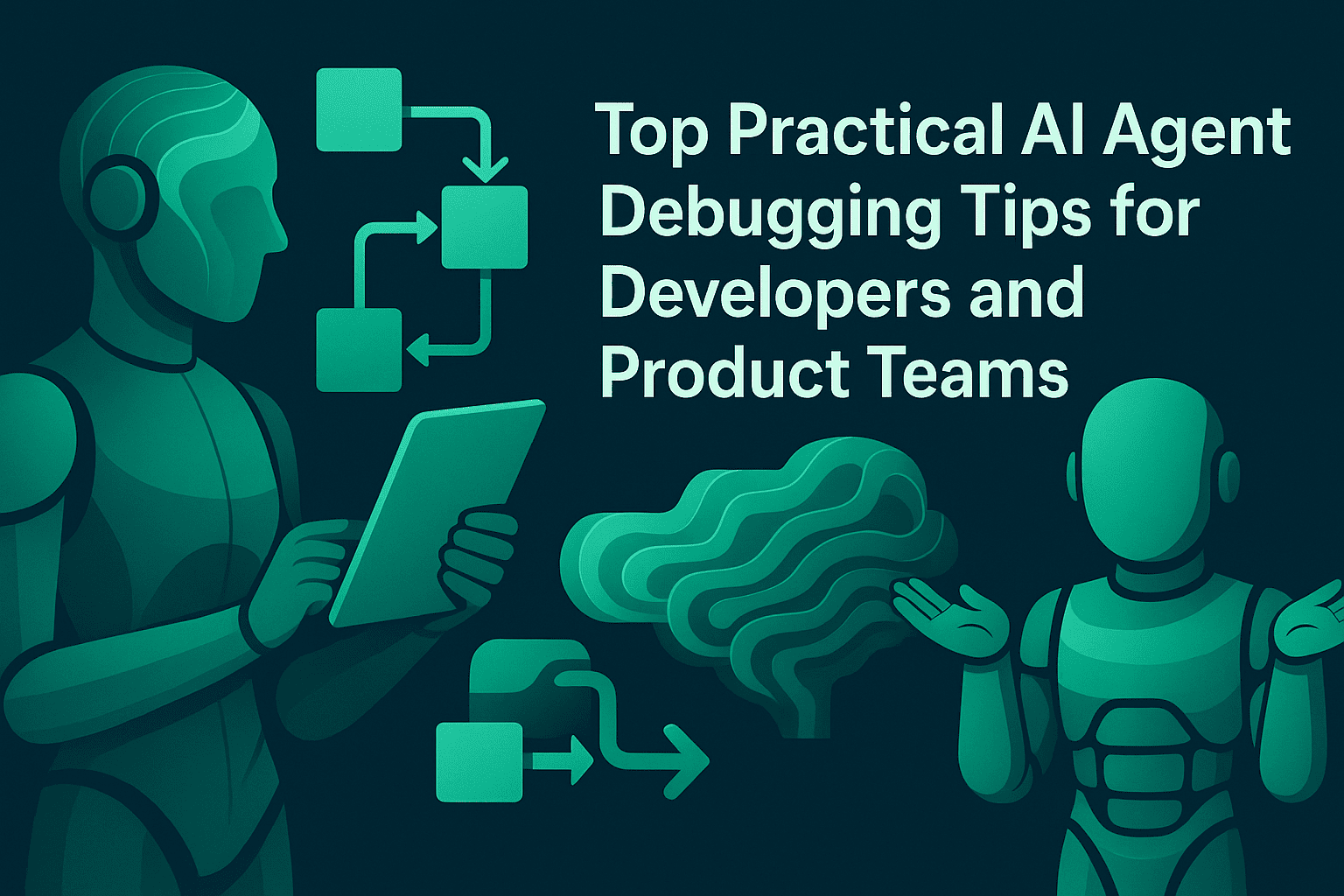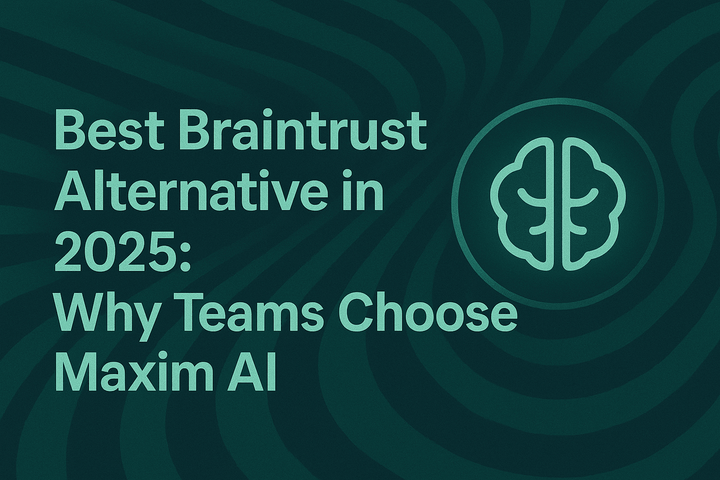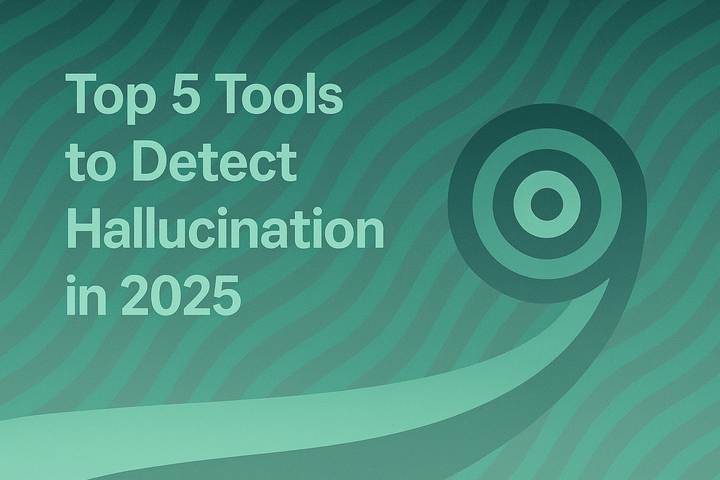Top Practical AI Agent Debugging Tips for Developers and Product Teams

TL;DR: Debugging AI agents requires a systematic approach that combines observability, structured tracing, and evaluation frameworks. This guide covers practical techniques including distributed tracing for multi-agent systems, root cause analysis using span-level debugging, leveraging evaluation metrics to identify failure patterns, and implementing real-time monitoring with automated alerts. Teams using comprehensive AI observability platforms such as Maxim can reduce debugging time by 5x while improving agent reliability in production.
Understanding AI Agent Debugging Challenges
AI agent debugging differs fundamentally from traditional software debugging. While conventional applications follow deterministic execution paths, AI agents operate through probabilistic decision-making, multi-step reasoning chains, and dynamic tool interactions. These characteristics create unique debugging challenges that require specialized approaches.
The primary complexity stems from the non-deterministic nature of large language models. According to research from Stanford's AI Lab, LLM-based agents can produce different outputs for identical inputs due to factors like temperature settings, model updates, and context window variations. This variability makes traditional breakpoint debugging ineffective.
Multi-agent systems compound these challenges. When multiple agents collaborate through sequential or parallel workflows, failures can cascade across agent boundaries. A retrieval agent might return irrelevant context, causing a reasoning agent downstream to hallucinate. Without proper agent tracing infrastructure, pinpointing the failure source becomes extremely difficult.
Production environments introduce additional layers of complexity. Latency issues, rate limiting from LLM providers, context window overflow, and inconsistent tool execution all manifest differently under real-world load compared to development testing. Teams need visibility into these production-specific failure modes to maintain reliable AI applications.
Implementing Distributed Tracing for Multi-Agent Systems
Distributed tracing forms the foundation of effective AI agent debugging. This technique captures the complete execution flow across multiple components, providing visibility into how requests propagate through agent hierarchies, tool calls, and model invocations.
Structuring Traces for Agent Workflows
Proper trace structure enables rapid root cause identification. Each trace should represent a complete user interaction, with nested spans capturing individual operations. For AI agents, this hierarchy typically includes:
Trace Level: Represents the entire user session or conversation. Captures session metadata, user identifiers, and high-level outcomes.
Agent Spans: Each autonomous agent gets its own span. This includes orchestrator agents, specialized task agents, and supervisory agents in multi-agent architectures.
Generation Spans: Individual LLM calls nested within agent spans. These capture prompts, completions, token usage, and model parameters.
Tool Spans: External tool invocations like database queries, API calls, or file operations. Critical for debugging integration failures.
Retrieval Spans: RAG pipeline operations including embedding generation, vector search, and context retrieval. Essential for diagnosing relevance issues.
Teams using Maxim's tracing SDK can instrument their agents with minimal code changes. The SDK automatically captures nested spans while allowing custom metadata attachment for domain-specific debugging context.
Capturing Relevant Debugging Context
Effective debugging requires more than execution traces. Teams must capture sufficient context to understand why an agent made specific decisions. Key metadata includes:
Input State: User messages, conversation history, and system context at the time of execution. Critical for reproducing issues.
Intermediate Reasoning: Chain-of-thought outputs, tool selection rationale, and planning steps. Reveals where reasoning diverged from expected behavior.
Model Parameters: Temperature, top-p, max tokens, and other sampling parameters. Small changes in these values can significantly impact behavior.
Retrieved Context: For RAG applications, the actual documents retrieved and their relevance scores. Enables diagnosis of retrieval quality issues.
Tool Execution Results: Both successful outputs and error states from external tools. Helps identify whether failures originated from agents or integrations.
The Maxim observability platform provides structured visualization of this context, allowing teams to navigate complex agent interactions without manually parsing log files.
Leveraging Evaluation Metrics for Proactive Debugging
Reactive debugging addresses issues after they occur. Proactive debugging prevents issues through systematic quality measurement. Evaluation metrics transform debugging from crisis response into continuous improvement.
Pre-Production Evaluation Strategies
Before deploying agents to production, teams should establish evaluation baselines across multiple dimensions:
Task Success Rate: Measures whether agents complete intended objectives. For customer support agents, this tracks query resolution. For coding agents, successful code generation and execution. Research from UC Berkeley shows that task success evaluation reduces production incidents by 40% when implemented systematically.
Agent Trajectory Analysis: Evaluates the path agents take to reach solutions. Identifies inefficient tool usage, unnecessary LLM calls, or circular reasoning patterns. The agent trajectory evaluator helps teams optimize agent workflows before production deployment.
Context Relevance Metrics: For RAG-based agents, measures whether retrieved context actually supports the generated response. Low context precision indicates retrieval pipeline issues requiring attention.
Faithfulness to Ground Truth: Ensures agent responses stay grounded in provided context rather than hallucinating information. The faithfulness evaluator catches knowledge leakage and hallucination patterns.
Tool Selection Accuracy: Verifies agents select appropriate tools for given tasks. Misuse of tools often indicates prompt engineering issues or insufficient tool descriptions. The tool selection evaluator quantifies this dimension.
Teams can run these evaluations systematically using Maxim's evaluation framework, which supports both automated metrics and human review workflows.
Simulation-Based Testing
AI agent simulation enables comprehensive testing across diverse scenarios without requiring live user traffic. Teams can generate synthetic user interactions representing edge cases, adversarial inputs, and high-complexity scenarios.
The Maxim simulation platform allows teams to:
Model User Personas: Create distinct user profiles with varying communication styles, domain knowledge levels, and behavioral patterns. Agents face realistic variability during testing.
Generate Scenario Coverage: Systematically test agents across hundreds of conversation flows. Identifies failure modes that manual testing would miss.
Reproduce Production Issues: When bugs emerge in production, teams can recreate the exact scenario in simulation for debugging without impacting live users.
Regression Testing: After fixing issues, re-run simulations to verify the fix worked without introducing new problems. Critical for maintaining agent quality during rapid iteration.
Simulation results feed directly into the debugging process. When specific scenarios consistently fail evaluation metrics, teams can examine the traces to understand root causes.
Root Cause Analysis Using Span-Level Debugging
After identifying failures through tracing and evaluation, teams need systematic approaches to pinpoint root causes. Span-level debugging provides the necessary granularity for effective diagnosis.
Analyzing Generation Spans
LLM generation failures manifest in several patterns. Understanding these patterns accelerates diagnosis:
Prompt Structure Issues: Malformed instructions, missing context, or ambiguous phrasing cause agents to misinterpret intent. Examining the actual prompt sent to the model often reveals structural problems not apparent in application code.
Context Window Overflow: When conversation history or retrieved documents exceed model context limits, critical information gets truncated. Maxim's generation spans track token usage, highlighting when limits are approached.
Output Formatting Failures: Agents expecting structured outputs like JSON sometimes receive malformed responses. Comparing expected versus actual output schemas identifies parsing issues.
Model Selection Mismatches: Using insufficient models for complex reasoning tasks leads to poor performance. Comparing behavior across different models helps identify capability gaps.
Debugging Tool Interactions
Tool execution failures often cascade into agent failures. Systematic analysis of tool call spans reveals common patterns:
Parameter Extraction Errors: Agents incorrectly extract parameters from user inputs or context. Examining the reasoning chain shows where parameter identification failed.
Authentication Failures: API rate limits, expired credentials, or permission issues manifest as tool errors. Proper error capture helps distinguish between agent logic issues and infrastructure problems.
Timeout and Latency Issues: External services sometimes respond slowly, causing agents to time out or retry unnecessarily. Span duration metrics identify latency bottlenecks.
Error Handling Gaps: When tools return errors, agents should handle them gracefully. Examining agent responses to tool errors reveals whether error handling logic works correctly.
The tool call accuracy evaluator quantifies these issues, helping teams prioritize debugging efforts.
Retrieval Pipeline Analysis
For RAG-based agents, retrieval quality directly impacts response quality. Debugging retrieval requires examining multiple components:
Embedding Quality: Poor embeddings cause semantic search to return irrelevant documents. Comparing embedding distances between queries and retrieved documents identifies relevance issues.
Chunking Strategy: Document chunking affects what context gets retrieved. Examining retrieval spans shows whether chunk boundaries split important information.
Ranking and Filtering: Even with good retrieval, poor ranking or insufficient filtering can surface irrelevant context. Context relevance metrics measure this dimension.
Hybrid Search Tuning: Systems combining semantic and keyword search require careful tuning. Analyzing which search strategy retrieved helpful context guides optimization.
Implementing Real-Time Monitoring and Alerting
Proactive debugging requires real-time awareness of production issues. Monitoring and alerting systems surface problems before they impact significant user populations.
Critical Metrics for AI Agents
Production monitoring for AI agents extends beyond traditional application metrics. Teams should track:
Quality Metrics: Task success rate, user satisfaction scores, and evaluation metrics run on production traffic. Declining quality metrics indicate agent degradation requiring investigation.
Performance Metrics: Latency percentiles for agent responses, time spent in each workflow stage, and token consumption rates. Performance regressions often precede quality issues.
Error Rates: Failed tool calls, LLM provider errors, timeout rates, and parsing failures. Spikes in error rates signal infrastructure or integration problems.
Cost Metrics: Token usage, API call volumes, and per-interaction costs. Unexpected cost increases sometimes indicate inefficient agent behavior like retry loops.
User Behavior Metrics: Conversation lengths, abandonment rates, and clarification requests. Changes in user behavior patterns reveal emerging issues.
Maxim's observability dashboards provide real-time visualization of these metrics with customizable time ranges and filtering.
Configuring Effective Alerts
Alert configuration balances sensitivity with noise reduction. Effective alerting strategies include:
Threshold-Based Alerts: Trigger when metrics cross predefined thresholds. For example, alert when task success rate drops below 85% or average latency exceeds 5 seconds.
Anomaly Detection: Machine learning models identify unusual patterns without manual threshold setting. Particularly valuable for gradual degradation that threshold alerts miss.
Trend-Based Alerts: Trigger on sustained metric trends rather than momentary spikes. Reduces false positives from transient issues.
Composite Alerts: Combine multiple signals to reduce noise. For example, only alert on increased latency when it coincides with increased error rates.
Teams can configure alerts and notifications to route issues to appropriate channels like Slack, PagerDuty, or email based on severity and team responsibilities.
Automated Evaluation on Production Logs
Running evaluations continuously on production traffic provides quality assurance without manual review overhead. This approach enables:
Quality Regression Detection: Automatically identify when deployed changes degrade specific quality dimensions. Automated evaluation on logs provides immediate feedback.
Drift Monitoring: Track whether agent behavior changes over time due to model updates, data distribution shifts, or environmental changes.
Targeted Dataset Curation: Failed evaluations automatically populate datasets for further analysis and evaluation. This creates a continuous improvement loop.
A/B Testing Support: Compare evaluation metrics across different agent versions deployed to production segments. Data-driven rollout decisions reduce deployment risk.
Debugging Workflow Integration
Effective debugging requires seamless workflow integration. Teams should establish clear processes connecting monitoring, investigation, and resolution.
Triage and Prioritization
Not all issues warrant immediate attention. Effective triage considers:
User Impact Scope: How many users experience the issue? Widespread problems take priority over isolated incidents.
Severity Assessment: Does the issue cause complete failures or degraded experiences? Critical failures blocking task completion demand urgent response.
Reproducibility: Can the issue be consistently reproduced? Reproducible issues are easier to debug and verify fixes for.
Workaround Availability: Can users accomplish goals through alternative paths? Issues without workarounds deserve higher priority.
Maxim's custom dashboards enable teams to create triage views highlighting high-priority issues based on these dimensions.
Cross-Functional Debugging
AI agent debugging often requires collaboration between engineering, product, and domain expert teams. Effective collaboration patterns include:
Shared Visibility: All team members should access the same traces and evaluation results. Maxim's intuitive UI enables non-technical stakeholders to understand agent behavior without reading code.
Human Review Workflows: Product teams can annotate production traces with expected behavior. These annotations become ground truth for evaluation and debugging. The human annotation system supports structured feedback collection.
Iterative Testing: Engineers fix issues while product teams verify fixes through simulation. This tight feedback loop accelerates iteration.
Knowledge Sharing: Document common failure patterns and debugging techniques. Build institutional knowledge reducing mean time to resolution.
Conclusion
Debugging AI agents requires systematic approaches combining distributed tracing, comprehensive evaluation, real-time monitoring, and cross-functional collaboration. Teams that invest in robust debugging infrastructure ship reliable AI applications faster and maintain quality at scale.
The key principles include establishing comprehensive observability through distributed tracing, implementing evaluation frameworks for proactive issue detection, leveraging span-level analysis for root cause identification, and configuring real-time monitoring with intelligent alerting. These practices transform debugging from reactive crisis management into continuous quality improvement.
Organizations serious about AI agent reliability should adopt platforms purpose-built for AI debugging. Maxim AI provides end-to-end support for AI agent development, from experimentation and simulation through production observability and evaluation.
Ready to improve your AI agent debugging workflow? Sign up for Maxim AI or schedule a demo to see how teams are reducing debugging time by 5x while shipping more reliable AI agents.
Frequently Asked Questions
What is the most common cause of AI agent failures in production?
The most common failure mode involves context relevance issues in RAG applications, where agents receive irrelevant or incomplete context leading to incorrect responses. This accounts for approximately 35-40% of production issues. Systematic retrieval evaluation and monitoring help identify and address these problems proactively.
How do I debug non-deterministic agent behavior?
Non-deterministic behavior requires capturing comprehensive execution context including model parameters, prompts, retrieved context, and intermediate reasoning steps. Using distributed tracing to compare multiple executions of similar inputs reveals patterns in the variability. Temperature settings, context window differences, and model version changes often explain inconsistent behavior.
What evaluation metrics matter most for debugging?
Task success rate provides the highest-level quality signal, while trajectory analysis, faithfulness, and context relevance offer diagnostic insight into specific failure modes. Teams should implement multiple evaluation dimensions rather than relying on single metrics. The appropriate metrics vary by application type and business requirements.
How can I reduce debugging time for multi-agent systems?
Structured distributed tracing with proper span hierarchies dramatically reduces debugging time by providing visibility into agent interactions. Implementing simulation environments for reproduction and leveraging automated evaluation to identify failure patterns also accelerates diagnosis. Teams using comprehensive observability platforms typically reduce debugging time by 60-80%.
Should I run evaluations on all production traffic?
Running lightweight automated evaluations on all production traffic provides comprehensive quality monitoring, while compute-intensive evaluations should run on sampled traffic. Sampling strategies should ensure coverage of diverse scenarios while managing computational costs. Many teams evaluate 100% of traffic using fast deterministic evaluators and 5-10% using LLM-based evaluators.
How do I debug tool selection and execution issues?
Tool debugging requires examining both the agent's reasoning for tool selection and the actual tool execution results. Capture tool call parameters, execution outputs, and error states in spans. The tool selection evaluator identifies systematic tool misuse patterns, while tool call accuracy metrics quantify execution reliability. Clear tool descriptions and few-shot examples in prompts often resolve selection issues.


